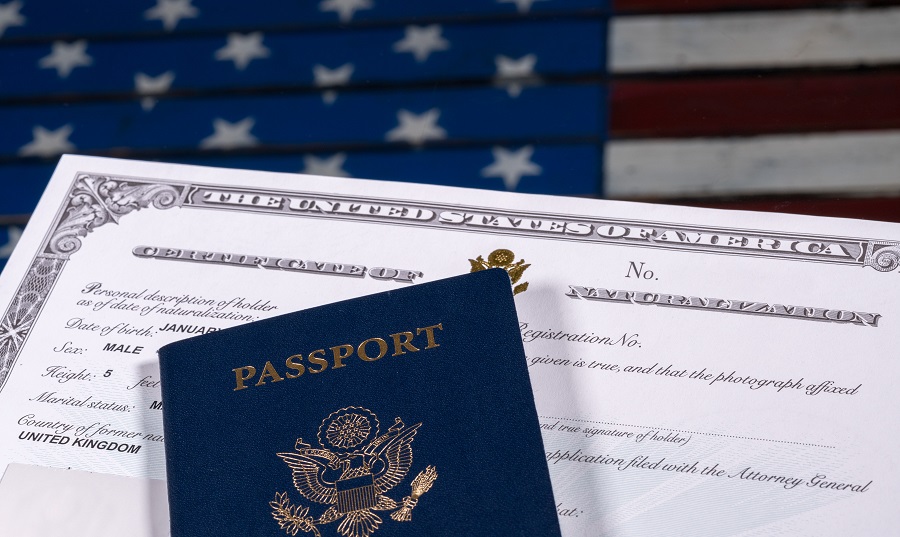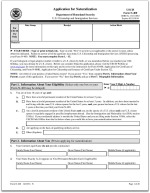

If you’re a permanent resident in the United States, the process to apply for citizenship is fairly straight forward. After confirming your eligibility, there’s a form to file, fee to pay and a citizenship test with the interview. It may sound challenging. But as an immigrant, you’ve already overcome so much more.
The process of applying for citizenship is known as naturalization. It’s the most common way that foreign nationals become U.S. citizens. An estimated 8.8 million permanent residents in the United States are eligible to naturalize right now. It’s easy to remain a permanent resident, but there are significant advantages to becoming a citizen. In a more contentious immigration environment, it helps insulate you from problems down the road. There are also more job opportunities, scholarships for students, and independence from more immigration fees.
If you have permanent resident children under the age of 18 that live with you, they will automatically become U.S. citizens when a parent naturalizes. There is no additional fee. What’s more, many financial aid grants for college are available only to U.S. citizens.
The vast majority of permanent residents have been a green card holder for five years before they can apply for citizenship. There are provisions in the law for permanent residents who have been married to a U.S. citizen for three years as well as U.S. service members. However, most applicants meet the following requirements before they apply for citizenship:
For a detailed explanation of eligibility, visit citizenship requirements. For example, you may not know that you may submit the application up to 90 days before meeting the five-year continuous residence requirement.
You may find it easier to use CitizenPath’s eligibility quiz at the beginning of the application. In just a few questions, we can help you determine if you’re ready to apply for citizenship.
While most permanent residents are eligible to apply for citizenship after five years, some individuals have a faster path. The groups most likely to take advantage of these reduced requirements are green card holders married to U.S. citizens and foreign nationals serving in the U.S. military.
When preparing the form to apply for citizenship, you’ll need to have the following items:

The USCIS form to apply for U.S. citizenship is formally known as Form N-400, Application for Naturalization. It’s a 20-page form that launches a review of your entire immigration history. USCIS will re-analyze how you obtained your permanent resident status, travel records and a criminal background check to ensure you meet the eligibility requirements. Maintaining accuracy and truthfulness is critical. In fact, USCIS recently updated its policy guidance that makes it easier for adjudicators to deny applications instead of issuing a Request for Evidence (RFE) first. It’s very important to submit at application package that is complete.
For the added reassurance that you’re doing everything right, use CitizenPath’s service to apply for citizenship. The attorney-designed software is an affordable way to prepare the Form N-400 with ease and get custom filing instructions for your situation.
Typically, an applicant’s Form N-400 is accompanied by:
The list of supporting items above is for the typical case. Based on your answers in the application, USCIS may require you to submit some additional documents. Military applicants will need to submit additional items. Your CitizenPath filing instructions will provide a detailed list of supporting documents and how to organize your package.
You won’t need to send things like tax returns and passports. However, there are several items that every applicant should take to the naturalization interview. Based on your case, CitizenPath filing instructions include a list of items to take to your naturalization interview.
USCIS does not encourage it, but it is possible to apply for citizenship with an expired green card. What’s important to realize is that the naturalization process could take about a year. During this time, you would generally have no proof of permanent resident status. This is a problem if you need to travel abroad, take a new job, or even renew a driver’s license. For this reason, most people apply for green card renewal first.
If you choose to renew your green card, it’s not necessary to wait the 10-12 months to receive your new card before applying for U.S. citizenship. Once you receive the I-797C, Notice of Action (usually about two weeks after filing), you may file the Form N-400, Application for Naturalization. Include a photocopy of your receipt letter (I-797C) to prove that you’ve started the renewal process.
CitizenPath provides simple, affordable, step-by-step guidance through USCIS immigration applications. Individuals, attorneys and non-profits use the service on desktop or mobile device to prepare immigration forms accurately, avoiding costly delays. CitizenPath allows users to try the service for free and provides a 100% money-back guarantee that USCIS will approve the application or petition. We provide support for the Petition to Help a Relative Obtain a Green Card (Form I-130), Citizenship Application (Form N-400), and several other commonly used USCIS forms.
Note to Reader: This post was originally published on September 25, 2018, and has been modified with improvements.